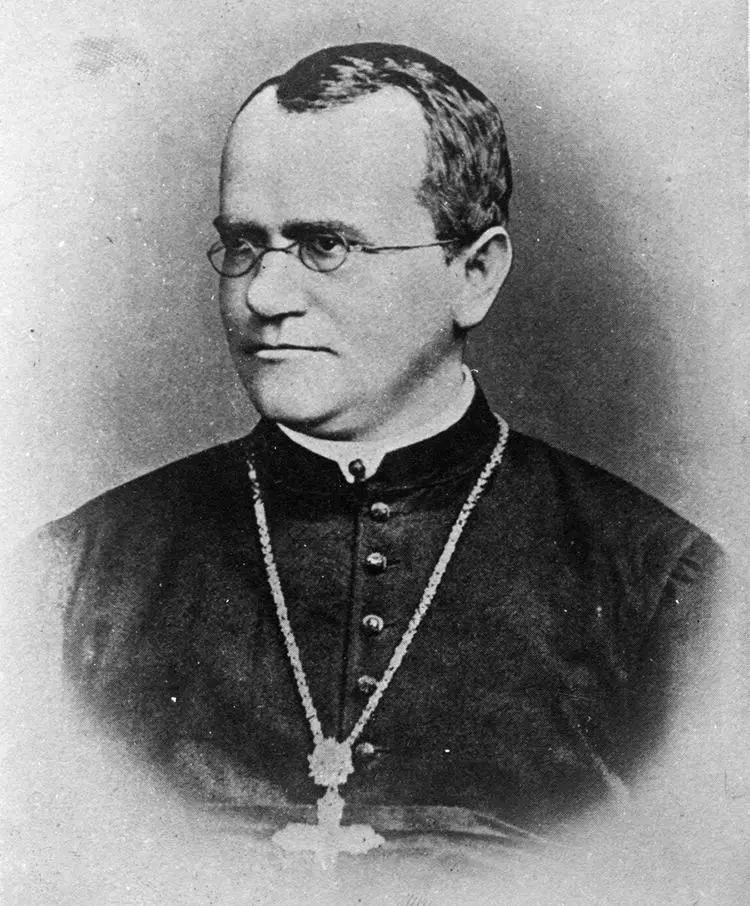1 ...6 7 8 10 11 12 ...21 For close to two millennia few scientists approached Aristotle’s understanding of heredity, though other theories were put forth during the centuries. Some, like the idea of the homunculus—the belief that every being was miniaturized and preformed in a reproductive cell—or the belief in panspermia—the idea that secretions from the entire body contribute to offspring—held sway for varying lengths of time. (10)
But before the late eighteenth century, ideas about what we today understand as heredity were quite different than our modern concept. Although similarities were recognized between parents and offspring and among families, such similarities, in a pre‐hereditarian worldview, were not generated by a hereditary mechanism, but by the act of conception itself, the pregnancy that followed, the development of the embryo, the birth, and, finally, lactation. There could be no laws of heredity in a system that viewed each creation of plant and animal life as isolated events. (11)
However, beginning in the eighteenth century, disparate fields of thought concerning hereditary phenomena would begin to converge on the road to developing hereditary theories. (12) Medical science, for example, began to systematically characterize disease. The taxonomic language of natural history moved toward uniformity. Professional animal and plant breeders more actively sought to breed specific features. Scientists investigated preformationist theories. And anthropology, in seeking to understand physical differences between peoples and populations, investigated the origins of human diversity. (13) From these various scientific investigations would slowly emerge both a popular and scientific discourse that would, over time, shape emerging concepts of heredity.
The work of Austrian monk Gregor Mendel, who bred peas in his abbey garden, built upon these growing discussions of heredity, and is credited with making the jump to studying heredity experimentally. But Mendel was not just a monk tending peas. The child of peasant farmers, he was a classically trained scientist raised in the greatest traditions of the Enlightenment. Intellectually nurtured by his family and schooled in the best academies and universities of Central Europe, the German‐speaking Mendel spent his life dividing his affection between God and science. (14) In 1843, at the age of 21, Mendel entered the St. Thomas Monastery in Brünn in what is now the Czech Republic. (15)
In the Church Mendel found a community of scientists—botanists, zoologists, and geologists among them—working diligently in their fields and making important contributions to the scientific literature. Perhaps the most important event in Mendel’s early career occurred 10 years into his stay at St. Thomas. In 1851, at the behest of his abbot, Mendel was sent to Vienna University to study at the institute of Professor Christian Doppler, one of the pioneers of modern physics. For 2 years at Doppler’s institute Mendel honed his scientific skills, taking courses in physics, chemistry, and mathematics, as well as entomology, botany, and plant physiology. The influence of physics was important to Mendel’s later work on heredity. Physics taught Mendel that laws governed the natural world and that these laws could be uncovered through experimentation. (16) But it was ultimately Mendel’s exposure to ongoing debates in heredity that transformed him into the scientist we remember today.
Mendel and his predecessors understood that traits could be passed between generations. A child with his mother’s eyes and his father’s nose was easy evidence of that. Breeding experiments with domesticated animals also suggested that traits were passed to offspring.
The prevailing theory during the nineteenth century, one to which even Charles Darwin mistakenly ascribed, was “blended inheritance.” (17) This theory held that the characteristics of parents blended in their offspring. Experimentation in this area failed because, as Mendel was able to eventually determine, heredity was not a lump sum but rather a series of individual traits.
In 1856 Mendel began to study the mechanisms of inheritance, working with varieties of garden peas from the genus Pisum . (18) In the course of his experiments his garden flowered, as did his understanding of heredity. Mendel discovered several generalities from his experiments that remain the foundation of twentieth‐century genetics. Any student of biology knows Mendel’s work. Known as Mendel’s laws, these basic tenets describe heredity in two simple mechanisms: the law of independent assortment and the law of segregation.

Figure 1.3Although it took decades for Gregor Mendel’s work on pea plants to revolutionize hereditary theory, his impact is today still felt in the biological sciences.
Credit: American Museum of Natural History
Mendel began an experiment with purebred peas. One breed had yellow seeds, the other green seeds. When purebred yellow‐seeded peas were bred with each other, their offspring through the generations would have yellow seeds. Under the same circumstances, the green‐seeded peas would always have green‐seeded progeny. However, when he bred the purebred pea with yellow seeds to a purebred pea with green seeds, the offspring, or the first generation of this breeding cross, always had yellow seeds. The green seed trait seemed to be gone. Mendel called traits like the yellow‐seed trait dominating (now called dominant) because in first‐generation crosses they would always appear. (19) Traits like the green‐seed trait were called recessive—although they disappeared completely in the first generation, they reappeared in the second. Thus, when Mendel took the yellow seeds from the first generation and either self‐pollinated them or pollinated them with pollen from other yellow peas from the same first‐generation breed, he discovered that some of these offspring, the second generation, again had the green seed trait. The plants, Mendel concluded, retained the ability to produce green seeds—of the second‐generation seeds, 6022 were yellow and 2001 were green. Likewise, when he used six other traits, he found the same pattern in the second generation—traits that had disappeared in the first generation reappeared in the second. (20) The chart below shows the relationship between dominant and recessive traits in second‐generation pea plants in the seven traits Mendel experimented with.
| Dominant trait |
|
Recessive trait |
|
| Round seeds |
5474 |
Wrinkled seeds |
1850 |
| Yellow seeds |
6022 |
Green seeds |
2001 |
| Gray seed coats |
705 |
White seed coats |
224 |
| Green pods |
428 |
Yellow pods |
152 |
| Inflated pods |
882 |
Constricted pods |
299 |
| Long stems |
787 |
Short stems |
277 |
| Axial flowers |
651 |
Terminal flowers |
207 |
(21)
From these experimental data, Mendel made several conclusions that are at the heart of his revolutionary contribution to hereditary theory. From the 3:1—dominant to recessive—ratio in the second generation, Mendel concluded that the traits he studied came in two different forms and that these forms existed in pairs in the plant. Mendel called these forms factors. Today we call them genes. During the process of making reproductive cells, Mendel deduced, these genes segregate from each other—that is, the two copies of a gene that you get from each parent segregate, and in the subsequent reproductive cells, only one half of the pair is passed on to offspring. At fertilization, a gene from each parent reconstitutes the pair. How else could Mendel explain how two yellow‐seeded pea plants could produce offspring with green seeds? In this case, the green‐seed trait was as much a part of the pea plant as the yellow‐seed trait despite sometimes being hidden. Mendel also concluded that the factors that were dominant (in the left‐hand column above) somehow overcame the factors that were recessive (in the right‐hand column) when they were combined in offspring from crosses. When all first‐generation plants were crossed, they had both kinds of factors. Mendel’s calculations allowed him to predict a 3:1 ratio if the two factors were segregated. This is Mendel’s first law, the law of segregation, which states that the factors specifying different alleles are separate or segregated, that only one may be carried by a gamete (an egg or sperm), and that gametes combine randomly. Therefore, a child has the same chance of inheriting allele A as it does allele B. (22)
Читать дальше













